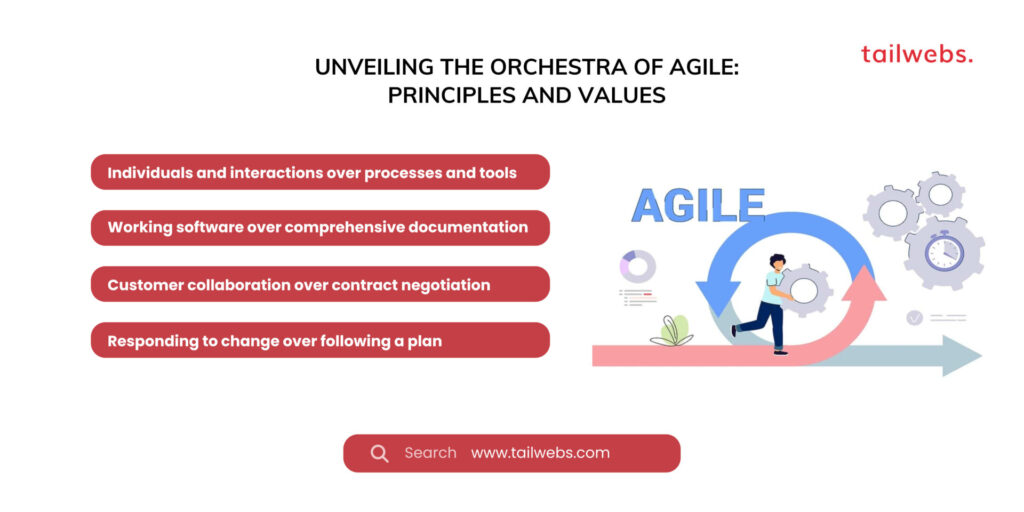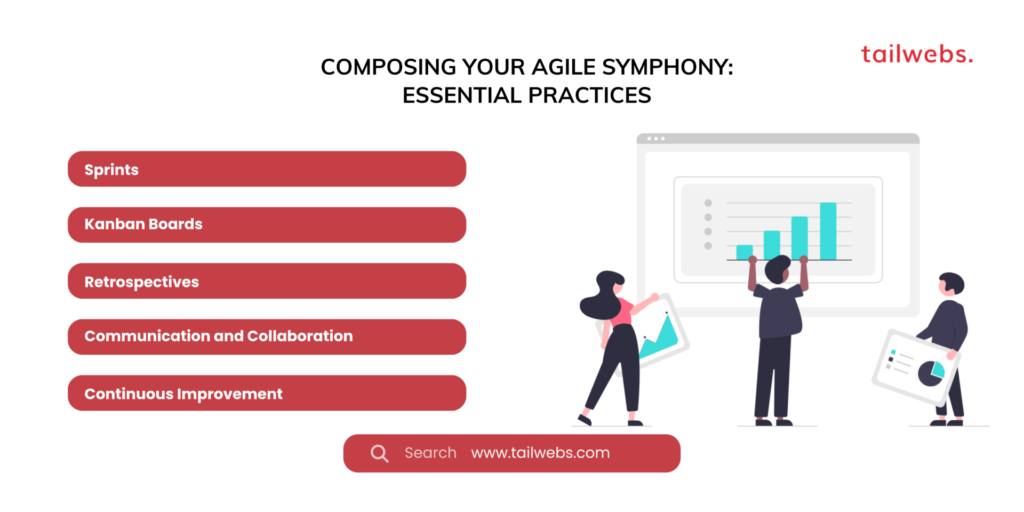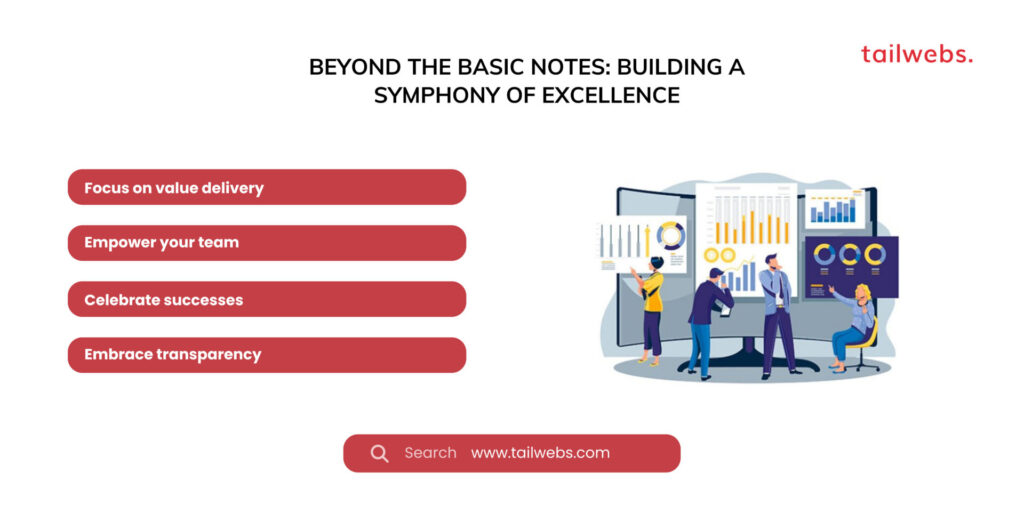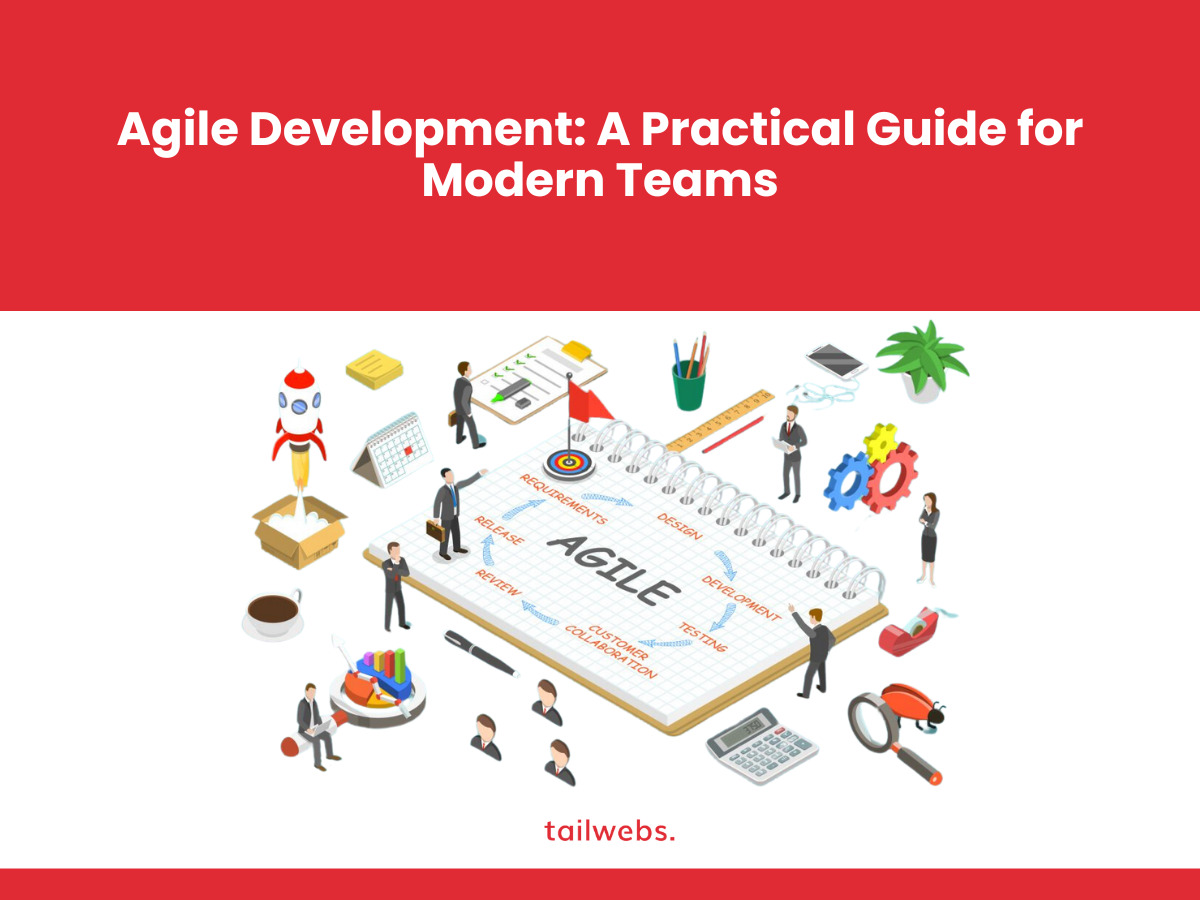In today’s fast-paced, ever-evolving world, the need for software development methodologies that embrace flexibility and adaptability has become paramount. Enter Agile development, a dynamic approach that empowers teams to deliver high-quality software iteratively and respond effectively to changing needs. Whether you’re a seasoned developer or just starting out, this guide equips you with the knowledge and practical tools to successfully navigate the Agile journey and compose a symphony of collaboration, innovation, and continuous improvement.
Unveiling the Orchestra of Agile: Principles and Values
Imagine Agile development as a grand orchestra, where diverse individuals with different expertise work in harmony towards a shared goal. The core principles and values guiding this orchestra are:
- Individuals and interactions over processes and tools: Value the human element above rigid rules, fostering collaboration and communication.
- Working software over comprehensive documentation: Prioritize delivering functional software iteratively over extensive upfront documentation.
- Customer collaboration over contract negotiation: Foster active collaboration with customers to ensure alignment with evolving needs.
- Responding to change over following a plan: Embrace change as inevitable and adapt plans accordingly.

Stats Highlighting the Benefits of Agile:
- Agile projects are 28% more successful than traditional waterfall projects. (Standish Group, 2023)
- Teams using Agile methodologies report 70% higher levels of customer satisfaction. (VersionOne, 2023)
- Companies adopting Agile experience 50% faster time-to-market and 53% higher profit margins. (Agile Alliance, 2023)
Composing Your Agile Symphony: Essential Practices
Ready to conduct your team to Agile success? Here are the key chords:
1. Sprints:
Divide your project into short, focused iterations (usually 2-4 weeks) called sprints, facilitating regular delivery and feedback loops.
- Define sprint goals: Clearly define what you want to achieve in each sprint to maintain focus and direction.
- Daily stand-up meetings: Conduct short daily meetings (15 minutes) for team members to update each other on progress, identify roadblocks, and collaborate effectively.
- Prioritization and planning: Prioritize tasks based on value and effort, utilizing tools like backlog grooming and planning poker
2. Kanban Boards:
Visualize workflows using Kanban boards, where tasks move through stages like “To Do,” “In Progress,” and “Done,” providing transparency and improved flow.
3. Retrospectives:
After each sprint, hold reflection sessions (retrospectives) to identify areas for improvement, learn from experiences, and continuously enhance your Agile process.
4. Communication and Collaboration:
Foster open communication, knowledge sharing, and collaboration among team members, stakeholders, and customers.
5. Continuous Improvement:
Embrace a culture of continuous learning and improvement, experimenting with new tools and techniques to optimize your Agile process.

Recommended Tools and Resources:
- Jira: https://www.atlassian.com/software/jira
- Trello: https://trello.com/
- Asana: https://asana.com/
- Monday.com: https://monday.com/
- Agile Alliance: https://www.agilealliance.org/
- Scrum Alliance: https://www.scrumalliance.org/
Beyond the Basic Notes: Building a Symphony of Excellence
Remember, Agile is not a one-size-fits-all solution. Adapt the core principles and practices to fit your specific needs and project context. Additionally:
Focus on value delivery:
Always prioritize delivering value to your customers with each iteration.
Empower your team:
Trust and empower your team members to make decisions and take ownership.
Celebrate successes:
Recognize and celebrate achievements along the way to maintain motivation and team spirit.
Embrace transparency:
Share information openly and transparently with all stakeholders.

Ultimately, Agile development is a journey, not a destination. By adhering to its core values, adopting the essential practices, and continuously striving for improvement, you can cultivate a culture of agility, innovation, and collaboration that empowers your team to compose a harmonious symphony of success in the ever-evolving world of software development.
Conclusion: Conduct Your Own Agile Symphony – Compose a Masterpiece of Software Development
Remember, mastering Agile development isn’t a solo performance; it’s a collaborative masterpiece composed by the entire team. As you navigate your Agile journey, consider the broader impact:
Promote diversity and inclusion in your Agile teams:
Ensure all voices are heard and valued, fostering a culture of psychological safety and respect.
Advocate for ethical software development:
Integrate ethical considerations into your Agile process, prioritizing responsible use of technology and minimizing potential harm.
Contribute to open-source Agile communities:
Share your knowledge and experiences to help others embark on their Agile journeys.
Continuously learn and adapt:
Stay updated on the latest Agile trends and best practices, adapting your approach to remain effective in a dynamic landscape.
Ultimately, the future of software development belongs to teams that embrace collaboration, continuous learning, and a commitment to creating positive impact. By adopting this mindset, you can transform your team from individual musicians into a skilled orchestra, conducting a harmonious melody of Agile development that delivers high-quality software efficiently, responds effectively to change, and creates lasting value for all stakeholders.





